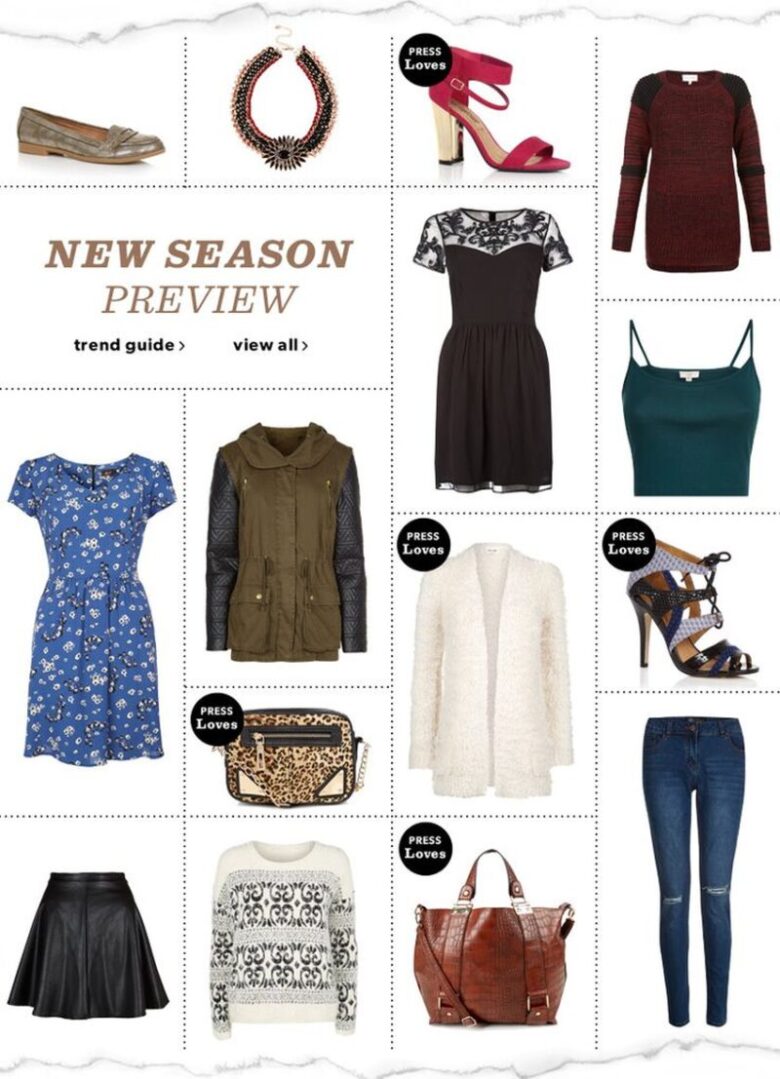People hate it when someone’s trying too hard to force them into certain actions or decisions, flooding their inboxes with annoying promos and offers. That’s why marketing specialists all around the worldspend countless hours struggling to find a perfect call to action techniques that wouldn’t look too aggressive or imperative. There are no single tactics that would teach you how to optimize your call to actions and avoid negative effects.
But one thing you can do to become a more welcome sender is to ease off on your customers. In other words, act softer: give advice and recommendations rather than direct orders and commands. According to eSputnik article, there are 45 psychological triggers to make people buy.
Apart from generating clicks and opens, a well-designed call to action can even change the world for the better. As an example, the UK’s digital government team has tested out different calls to action encouraging people to join the Organ Donor Register after applying for a driver’s license or renewing their vehicle tax. Over the year, the best-performing CTA is encouraged 96,000 more applications for organ donation compared with the original call to action, helping to save many more lives.

However, many, if not most, website visitors still ignore even the most appealing calls to action. Why? OK, perhaps they just haven’t made a decision yet. Marketing experts can’t tell for sure whether these visitors will come back to the website when they’re finally ready to take action. In fact, they may simply go and order the same products somewhere else.
Conventional call to action techniques used in ads and commercials are primarily focused on encouraging customers to act. These practices, however, are neither unique nor the best. Not the best way to build good relations with your customers. Email marketing efforts are often driven by the belief that users are ready to take action when in fact they often aren’t. Readers may simply click on CTA buttons out of curiosity.
Customers tend to research their options extensively and carefully, step by step. They often hesitate to take action because they’re still considering their purchase. It’s especially the case for email marketing professionals who often rely on a click-through rate (CTR) as the key measure of their marketing success while in fact, a higher CTR doesn’t necessarily mean more sales.
Once you start thinking about how to optimize call to action messages to make them concise and effective, you should try and see your CTAs through your customers’ eyes.
Call to action texts are usually designed to support transactional content that explains why a certain choice is right. In this case, a CTA includes all the information needed for decision making. There are no questions but one: is the client ready to act?
In fact, email campaign content is mostly designed to spark customers’ interest, not to present information in bare figures or make absolute statements. This type of content is rather advisory than transactional: it helps readers analyze a range of issues they need to consider before making a decision. Seeing the recommendations, customers often see call to action messages encouraging them to make a choice based on incomplete information. What type of a CTA is more suitable when your audience is still in doubt?
Marketers often get too aggressive with their CTA forgetting that subscribers need some time to understand and appreciate the topic. They may be unsure if they are really interested in the inbox offer. That’s why a call to action may look annoying when it hurries clients up – “c’mon, don’t hesitate, do it now!”. CTA should anticipate your audience intentions not to force them.
How to Optimize a CTA Based on Your Audience Specifics
A basic email marketing advice – a call to action should not offer a choice to online visitors: it will only make them confused, distracted or annoyed and they will do anything but follow the call. On the other hand, an irrelevant CTA leads to a failure too. Regardless of how clear a CTA is, or how much profit it offers – a client will skip an email if still not ready enough to act. Okko.tv considered this factor, so their email campaigns are now featured with option to make a decision a bit later:
A Choice Structure in CTA
Dealing with a call to action, marketers usually try to avoid offering users any choice but there are some cases when choice is ok. The most typical situation is when some service offer includes several tariff plans in different price ranges. For example, a set like this: a starter plan, a value plan (this part must be designed noticeable and located in the very center of the email), and a VIP plan.
It often happens that brands add two or more CTA when they lack data for effective client segmentation, and content isn’t personalized. Websites are not always made to perform one single task. For example, there are two calls to action on Uber homepage: one is inviting new drivers, another – new clients. This online clothing store doesn’t hurry you to make an order in their email campaign but offers to explore as many available options:

CTA Variables: Payoffs and Obligations
Most CTA studies are focused on changes in the text content. For example, a marketer can test the difference between “Get a Bonus” and “Download for Free” CTAs. Texts are different, but for a client, they are still the same. Actually, in email marketing, there are just different versions of the same call to action explored instead of alternate techniques that may lead to really different email newsletters efficiency rates.
A CTA may become a really effective email marketing tool when you won’t deal with wording only but provide your clients with different ways to act, so they will be much more interested in the results of choice.
When it comes to a CTA, users pay attention to these basic aspects: profit to get and conditions to agree with. In both senses, a call to action is often arranged in a vague way, and sometimes it’s not a coincidence. Instead of a clear value exchange, it becomes just a twaddle. Clients provide their personal data …and gain nothing useful in return. But they have to believe that something worthy will be given for their efforts.
How Сlients See a CTA?
Looking at a CTA, people estimate the profit they will get here and now and further prospects of their decision. At the same time, decision making is influenced (sometimes unconsciously) by actual experiences of former experience with a CTA. This way, users generate the personal prognosis of benefit from responding to the call. Here are some more questions:
What will a client get right now, and is it useful?
What will a client get later, and how profitable it will be?
What personal data is required to get the info?
If a client changes their mind, is it easy to change the arrangement?
A decision is based on estimation if the process is under the client’s control, and to what extent. So, clicking on CTA button – which conditions and commitments does a user agree with?
There are the following commitment types:
- One-time transaction (exchange of personal data for some data product);
- Temporary obligations that may be canceled (a trial version with limited features);
- Commitments with predetermined terms of use (a trial version based on the user’s time of being online); or commitments with unlimited terms when a client receives occasional activation campaigns.
An example of an email campaign by Bookmate – it offers a trial version with a limited term of use:
Readers want to know how much content they’ll receive right now; or vice versa, how long they’ll have to wait to explore all the features. An experienced user knows that registration makes relations with the brand much closer. Premium clients receive many more email campaigns from the brand, and they may be even not related to the specific request; these mailings usually include the elements of different info products, or requests for more personalized data… and attempts to sell brand products via direct sales.
Actually, clients only guess what they may be compelled to do… but still have no idea what they really want. When a brand is purely focused on efforts to make clients accept some offer, it may miss whether the offer really suits clients’ needs. Suppose that someone is looking for more info related to some content found on the Internet. The brand succeeded to create enough interest motivating a person to request additional info. However, existing interest doesn’t mean that thebrand can simply add a call to action like “Get more info”, and make clients happy. Readers may find some content interesting… but not worthy of efforts to get more. When a brand really wants to be interesting, it needs to consider user’s preferences, not just compel to act. To enhance your email newsletters efficiency, these settings may be required:
- Amount of content: the level of detail you provide should be tailored to the personal preferences of each subscriber.
- Email frequency: how often you send emails to your contacts should depend on how relevant and important this content is for them.
- User experience with content: a format choice should be based on practical use convenience (for example, audio podcasts) or options to share (for example, questionnaires and templates that may be forwarded).
Invite to Make a Choice
It’s really important to provide users with multiple ways to interact, and this is not just a brand’s tool to reach its goals. Look at Politico, an online website publishing political news. They offer a premium service Politico Pro; it costs thousands of dollars a year. One of its key features is the option to choose the topics a user wants to follow. Just a simple setting, but it’s really useful for thousands of premium subscribers.
Instead of attempts to control user’s behavior, a call to action provides a choice that may help clients realize what they really want. A CTA may be the key advantage when you try to understand the motivation of a user who might become interested in your brand products or services. Offering the more specific content provider may explore what should it offer to be unique.
The above email marketing experts use email campaigns not only to sell, but also to collect information about the customers’ preferences and use this data for email performance analysis.

The recommended practice is a good alternative to “one more action” when a user is urged to register just to read one more paragraph.
What should we advice? Brands may ask clients to specify their preferences via questionnaires like “why our brand is useful for you? How can we help you?” – actually, these words are quite rare for calls to action, as they are mostly focused on new clients involvement (and, accordingly, on compelling to make decisions). Advice orientation is a step aside, a direction towards continuous and personalized relations with the audience.
Different companies may help their clients by offering them to configure content. Here are some typical scenarios when a reader may be asked about personal interests:
- Let me know when new info is available (choose the interesting info topics);
- Propose me the suitable solutions (a choice based on preferences);
- Show me your actual offers (service pack options).
The better your content, the deeper your understanding of customers
It’s quite easy for email marketing specialists to overpass the frames of passive feedback based on clicks analysis: just provide your readers with an option to take an active part in their personal preferences determining. It’s hard for behavioral analysts to find why users take this or that action; a set of factors should be used to define the motivation to act.
By offering users a choice, marketers receive active feedback to analyze their content relevance and betterlearn the client’s motivation.
Email marketers can estimate the depth of users’ interest by giving them a choice. Some readers might be interested to expand the range of topics content. Others might be looking for more focused content. Some will show a continued interest in the brand new content. These parameters provide clear data on clients readiness to act.
This approach is especially helpful when factors that influence decision making are complex and require time to think. Examples would include B2B marketing, as well as far-reaching decisions, for example, when choosing a university.
All effective calls to action are based on experiments, tests and email performance analysis. Giving your customers more CTA options to choose from provides more info to explore. Some ways to optimize calls to action and make them client-motivating may be unobvious as long as different practices aren’t implemented and tested.
Creating relevant content requires a deep understanding of your target audience. In email marketing, those who are ready to adopt such changes will gain a much better knowledge of their customers, a kind of knowledge that goes beyond the limitations of generic decision-making models.



